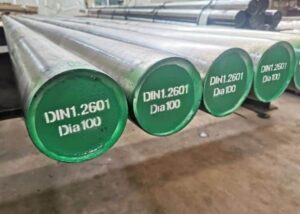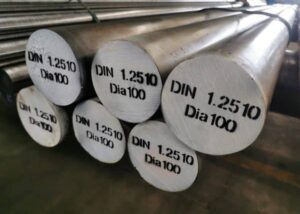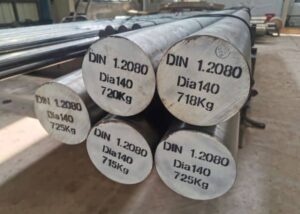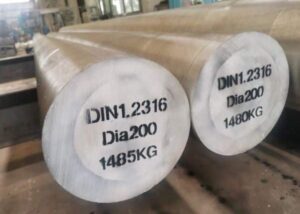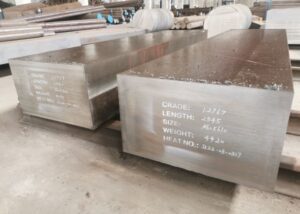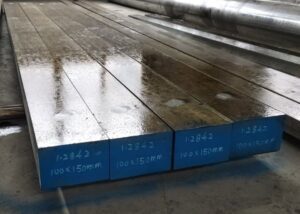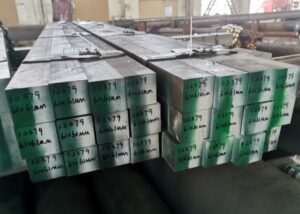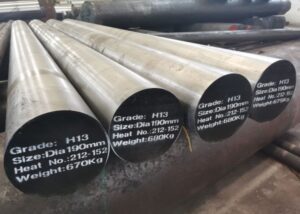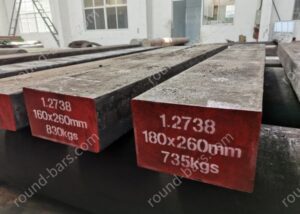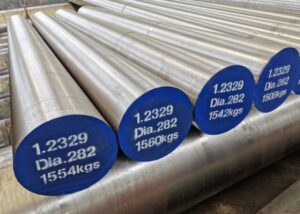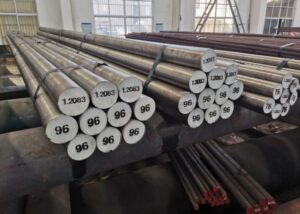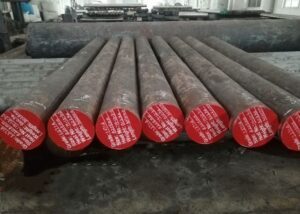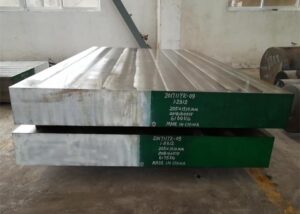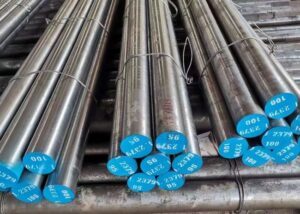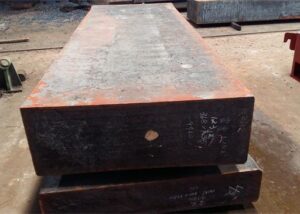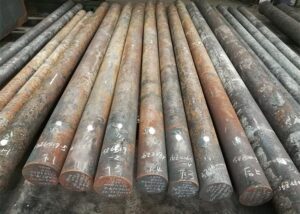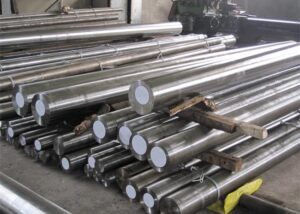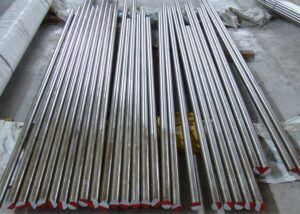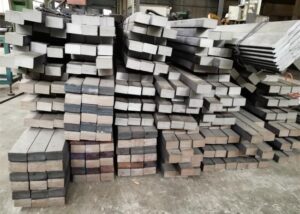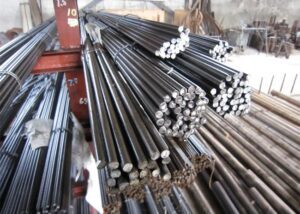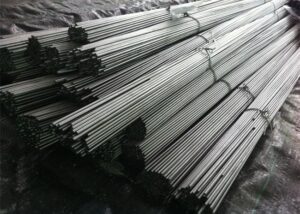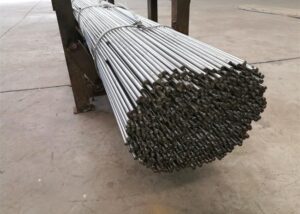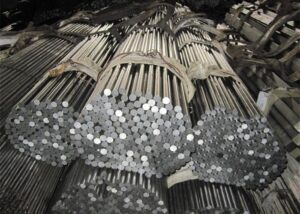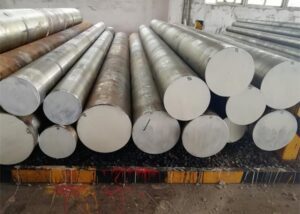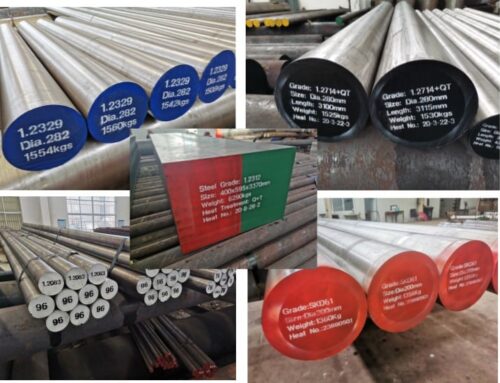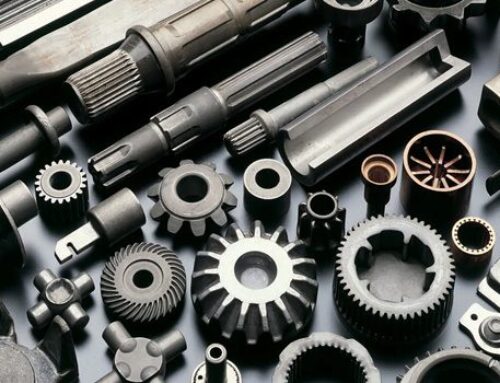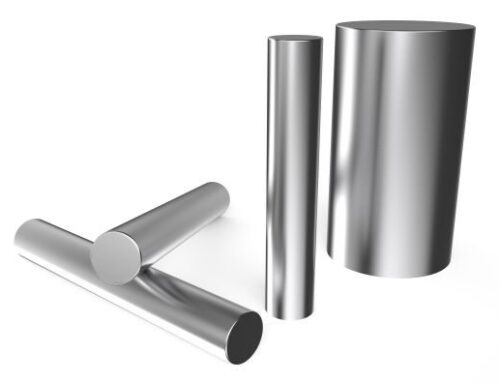SEVEN FACTORS FOR CHOOSING TOOL STEEL
Known for their unique hardness, tool steels are used in the manufacture of cutting tools such as knives and drills, as well as in hot extrusion, stamping and plastic molds.
Although the selection of tool steel seems to be very simple, this process requires trade-offs, which must be comprehensively considered from the characteristics of tool steel, process performance, production cost and specific applications.
Scientifically correct and reasonable selection of tool steel is the basis for ensuring the best performance, service life, safety and economy of the product. Selecting the best tool steel grade will depend on a variety of factors as follows.
- Hardness
Hardness directly reflects the material’s resistance to deformation. The hardness of tool steel is usually expressed by Rockwell hardness HRC.The application hardness of most tool steel is 60 to 62 HRC, and some will be as high as 66 HRC or above. The final application hardness depends on the steel grade.
Tool steels that undergo plastic deformation in service show insufficient hardness.For example, permanent bending of the blade in use, swelling of the end face of the punch and collapse of the surface of the die all indicate insufficient hardness.Since the deformation resistance of steel is directly related to hardness (independent of steel type). Therefore, the correct way to solve the deformation is to increase the hardness, or reduce the working load. At this time, changing the steel grade will not work unless the new steel grade can achieve higher hardness.
When the difference in hardness value is not large, the change in hardness generally has little effect on the wear life of tool steel. Different tool steels usually have the same hardness in use, but their wear life often varies greatly.
- Toughness
The toughness of tool steel is a kind of resistance that characterizes its resistance to fracture under the action of impact force or other stress.
Most tool steels are notch sensitive. Therefore, any small gap in the material will cause it to break under lower impact force.Therefore, in addition to the inherent characteristics of the material, notches, grooves, geometric changes and other small changes on the workpiece will reduce the impact resistance of the corresponding part.
In production, the loss caused by wear failure is usually less than the loss caused by ductile failure (fracture), because fracture failure is often unpredictable, usually interrupts production, and even brings catastrophic losses.Wear failure is generally gradual and it can often be corrected. Toughness failure is due to insufficient toughness of the material itself, or other reasons, such as heat treatment, lubrication method, or other working conditions.The toughness value can characterize the steel’s resistance to fracture but not its service life.
- Wear Resistance
Wear resistance refers to the ability of a material to resist mechanical wear. The objects in contact with the material are workpieces, other tools and objects adhered to their surfaces (scale, metal shavings, etc.). Wear resistance is determined by the hardness of the steel and its chemical composition.
We usually intuitively believe that the wear resistance of high hardness tool steel is better than that of low hardness. However, at the same hardness, different steel grades have different wear resistance. For example, O1, A2, D2 and M2, even though their hardness is 60HRC, their wear resistance is not all equally excellent.
Facts have shown that under some working conditions, the wear resistance of low-hardness high-alloy tool steel is better than that of high-hardness low-alloy tool steel. Therefore, for wear resistance, the influence of other factors other than hardness must be considered, such as carbides, heat treatment processes, etc.
The above three factors,hardness and toughness can be regarded as the function of “enough is enough”. That is to say, as long as the performance of tool steel in this area is to prevent its failure in this area, it is enough, and it is not necessary to further improve these properties. However, wear resistance can be considered as a “never enough” function, that is, improving the wear resistance of the tool will increase its life. In order to increase tool life, the wear resistance of tool steel should be improved endlessly. Therefore, as long as other properties are not damaged, it is always beneficial for tool steel to improve wear resistance.
- Application & Characteristic
There are many types of tool steels available, depending on their composition, the temperature range at which they are forged or rolled, and the type of hardening they undergo.
For details, please refer to the article on this website: what is tool steel?
Here, this article takes cold work tool steel as an example. Cold working tool steel is mainly used for blanking and shearing, cold forming, cold extrusion, cold forging and powder press forming.According to the classification of cold work tool steel, it can be divided into three types, of which O1, A2, and D2 are their typical representatives. They all have good hardness, wear resistance and deformation resistance at room temperature.
O1 is an oil-hardening steel with high hardness and good machinability. This grade of tool steel is primarily used for items such as cutting tools and drills, as well as cutlery.
A2 is a commonly used air-hardening steel with a moderate amount of alloying material (chromium). It has good machinability and a balance of wear resistance and toughness. It is commonly used in blanking forming punches, trimming dies and injection molds.
D2 steels can be oil hardened or air hardened and contain higher percentages of carbon and chromium than O1 and A2 steels.It has high wear resistance, good toughness and low deformation after heat treatment. The higher carbon and chromium content in D2 steel makes it ideal for applications requiring longer tool life.
Other tool steel grades contain higher percentages of different types of alloys, such as HSS M2, which can be selected for high-volume production. Various hot-worked steels can maintain sharp cutting edges at higher temperatures up to 1000°C.
- Machinability
When choosing a tool steel, we must consider the machinability of the material. Tool steel will eventually be applied to products, and products will involve machining, including not only rough machining before heat treatment, but also final finishing after heat treatment. Therefore, the difficulty of machining performance often determines the cost and quality of the product.
In general, the chemical composition of a tool steel is important, the higher the alloy composition, the more difficult it is to machine. As the carbon content increases, the machinability of the metal decreases.
The formed structure of the steel is also very important to the metal machinability. Different constructions include: forged, cast, extruded, rolled and machined. Generally, forgings and castings have very difficult surfaces.
More importantly, hardness is an important factor affecting metal processing performance. The general rule is that the harder the steel, the harder it is to machine. For tool steel, the conventional hardness is about 60HRC, which is even more unfavorable for processing.
- Failure Principle
Before selecting a tool steel grade, it is important to consider which tool steel is most likely to fail in this application by examining failed tools. For example, some tools fail due to abrasive wear, where the material being cut wears away the surface of the tool, although this type of failure occurs slowly and predictably. Tools that wear out to failure require tool steels with higher wear resistance.
Other types of failure are more catastrophic, such as cracking, chipping or plastic deformation. For tools that have broken or cracked, the toughness or impact resistance of the tool steel should be reinforced(note that impact resistance can be reduced by nicks, undercuts, and sharp corner radii, which are common in tools and dies). For tools that deform under pressure, hardness should be increased.
But keep in mind that the properties of tool steels are not directly related to each other. For example, you may need to sacrifice toughness for higher wear resistance.This is why it is so important to understand the properties of the different tool steels, as well as other factors such as the geometry of the die, the material being machined, and the manufacturing history of the tool itself.
- Manufacturing Cost
The final issue to consider when choosing a tool steel type is cost, and it is a factor that has to be considered. Roughly speaking, the overall production cost includes material cost, heat treatment cost, machining cost, assembly and packaging transportation cost.
In fact, when choosing tool steel, you cannot blindly choose high-grade materials, but you should comprehensively consider the impact of materials on product functions and costs to achieve the best results.If the tooling proves to be of poor quality and fails prematurely, the choice of material may not reduce the overall cost of production. At this point a cost-benefit analysis should be performed to ensure that the tool steel material selected will provide the desired properties.
In the end, we should also consider comprehensively according to the stress, temperature, corrosion resistance and other conditions of the product, rather than simply pursuing a certain performance index.
